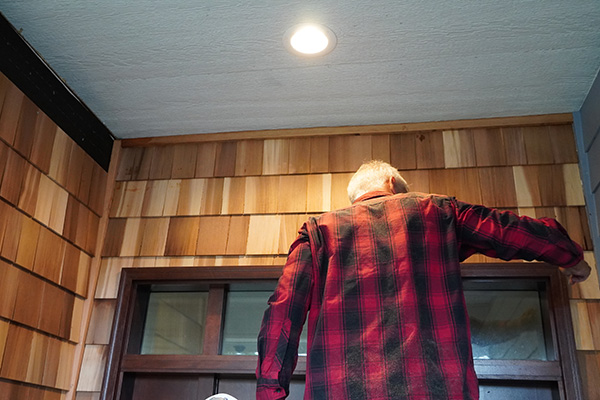

Project:
Shakering a Entryway
Adding cedar shakers to the entryway of your home creates a unique yet timeless look. See how easy it is to complete this weekend DIY project using Shakertown Craftsman Shingle Panels and a few common tools and materials.
Available at Lowe’s stores throughout Georgia.
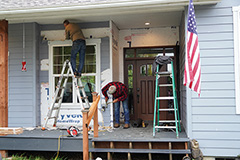
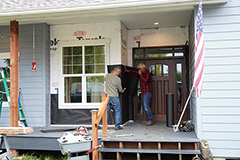
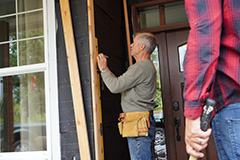
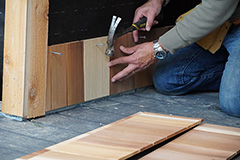
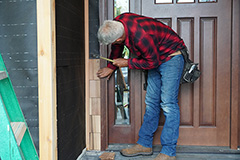
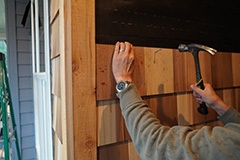
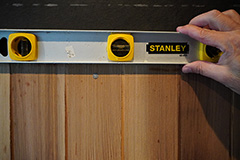
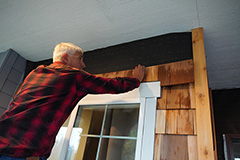
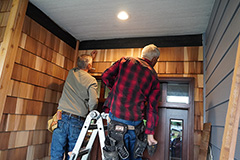
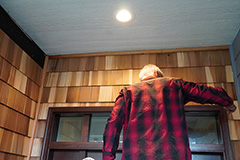
- Saw
- Speed square
- Pencil
- Hammer
- Utility knife
- Level
- Measuring tape
- Stapler
- Shakertown Craftsman Shingle Panels
- Building Paper/Moisture Barrier
- 1-3/4" Galvanized Roofing Nails
- Non-hardening silicone caulk
- A trim board for the top edge: 1" x 2" cedar
- Trim boards for inside corners (if needed): 2" x 2" cedar is ideal
- Trim boards for outside corners (if needed): a full 1" thick board is best. You can also miter your corners with a 45-degree bevel at an 88-degree angle.
- Measure the wall area.
- Example: 10ft wide x 10ft high = 100 square feet total
- Calculate the area of your windows and doors, then subtract that area from the total square footage in step 1. Example:
- Window size is 5.5’ x 3.5’ = 19.25 sq ft. Door size is 8’ x 3.5’ = 28 sq ft
- Total area of windows and doors: 19.25 sq ft + 28 sq ft = 47.25 sq ft
- Total area of wall with windows and doors subtracted: 100 sq ft - 47.25 sq ft = 52.75 sq ft
- Multiply your final total from step 2 by 1.05 for a 5% waste factor.
- 52.75 sq ft x 1.05 = 55.39 sq ft
- Divide your total from step 3 by 4.6 to determine the number of Shakertown Craftsman Shingle panels needed for your project.
- 55.39 sq ft / 4.6 = 12 panels

Step-By-Step instructions:
Step 1
Remove your old siding, leaving the window and door trim in place.
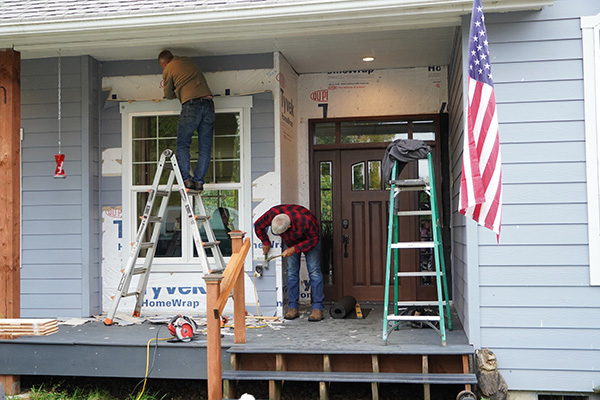
Step 2
Mark the location of the studs: you will want to nail your siding through the sheathing and into the studs.
Step 3
Install building paper/moisture barrier with a stapler or tack hammer. The headlap (overlap on the top edge) should be a minimum 2". The side lap, if needed, should be a minimum of 6".
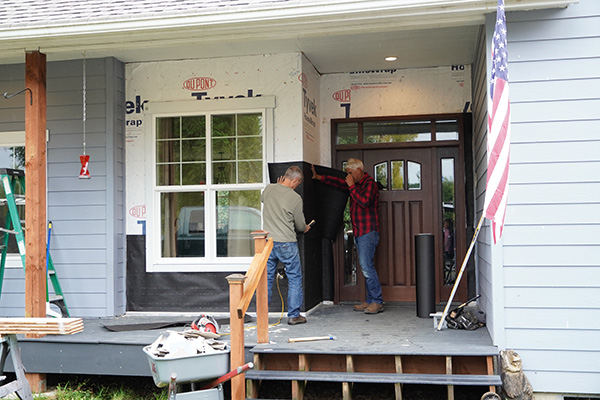
Step 4
Install your corner boards, if needed, with a stainless steel or galvanized finish nail.
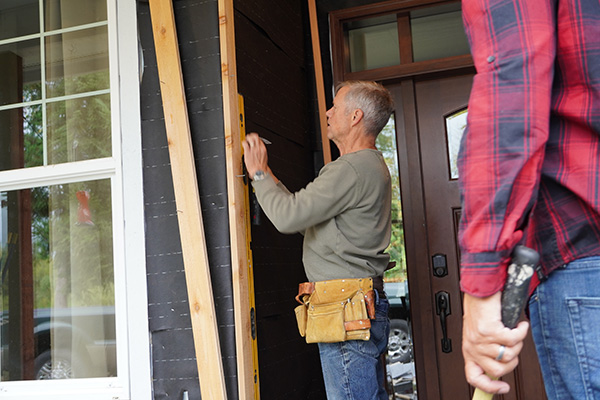
Step 5
Install your first row of shingle panels, making sure they are level. Leave a 1/4" drip edge if applying over decking material, 1" to 2" if installing over a concrete or solid surface, or 6" above ground cover.
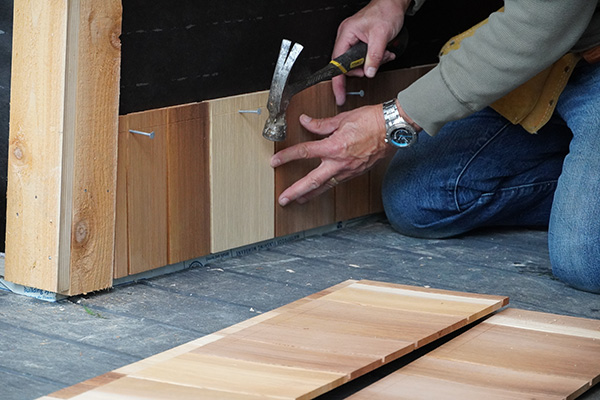
Step 6
Leave a 1/8" joint against the corner boards, window or door trim. This will be caulked when your siding is completed. Also leave a 1/16" joint between panel ends.
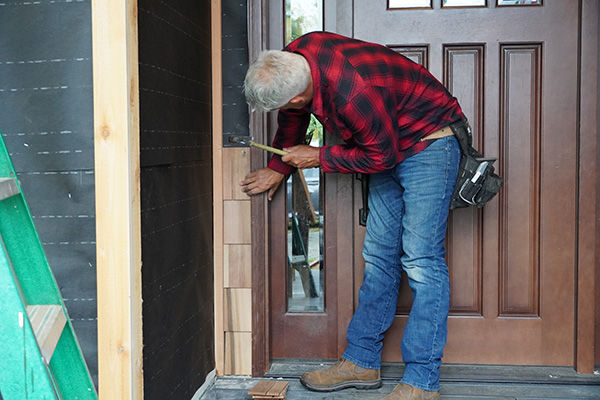
Step 7
Using a 1-3/4" stainless steel or galvanized roofing nail, nail on the scribed nailing line 1" from the panel ends and at each stud (16" or 24"). If you miss a stud, place another nail 1" from that nail. They'll all be covered up with the next row of shingle panels.
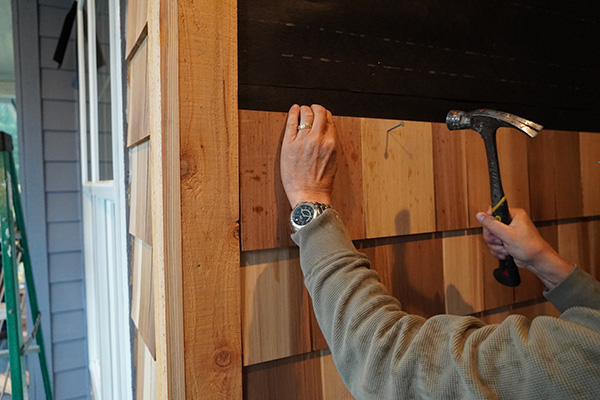
Step 8
The next row or of panels will automatically level with a 1-1/8" overlap. Cut this panel back 16" or 24", corresponding with your stud spacing. You want the panel end joints to be offset so there is no continuous seam. Continue up the wall, using the nailing and spacing recommendations in steps 6 and 7.
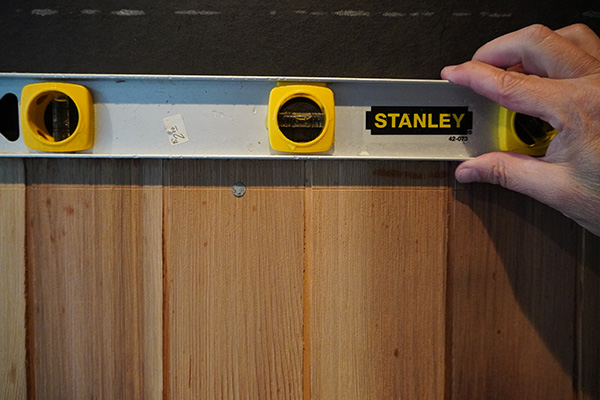
Step 9
Above doors and windows, leave a ¼" drip edge above the flashing. This prevents moisture wicking and proper drainage.
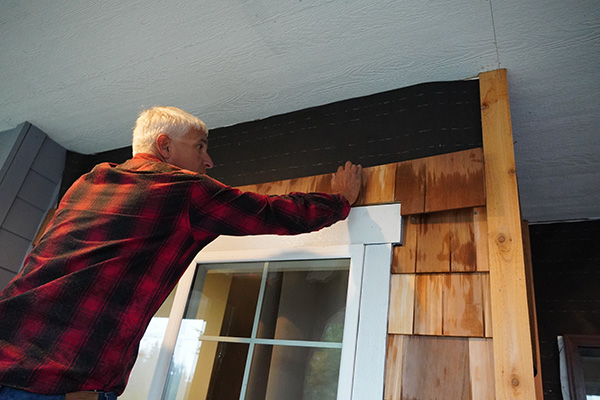
Step 10
When you reach the top, the final piece may require face nailing. We recommend a galvanized or stainless-steel siding nail.
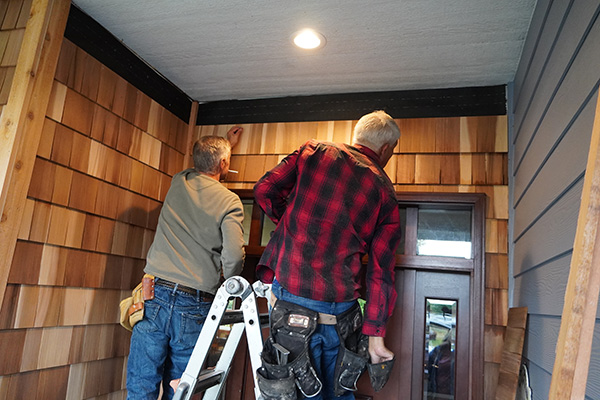
Step 11
Caulk the 1/8" joint against the soffit with a non-hardening silicone caulk. A trim board, like a 1"x2" cedar, can be attached with galvanized or stainless steel finish nails to finish your new wall makeover.
